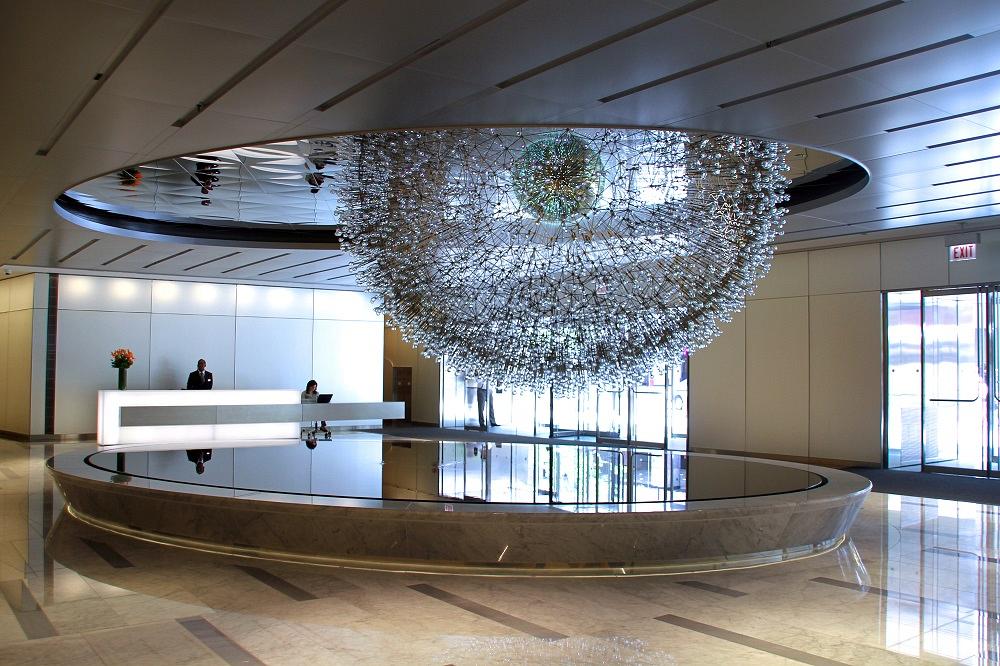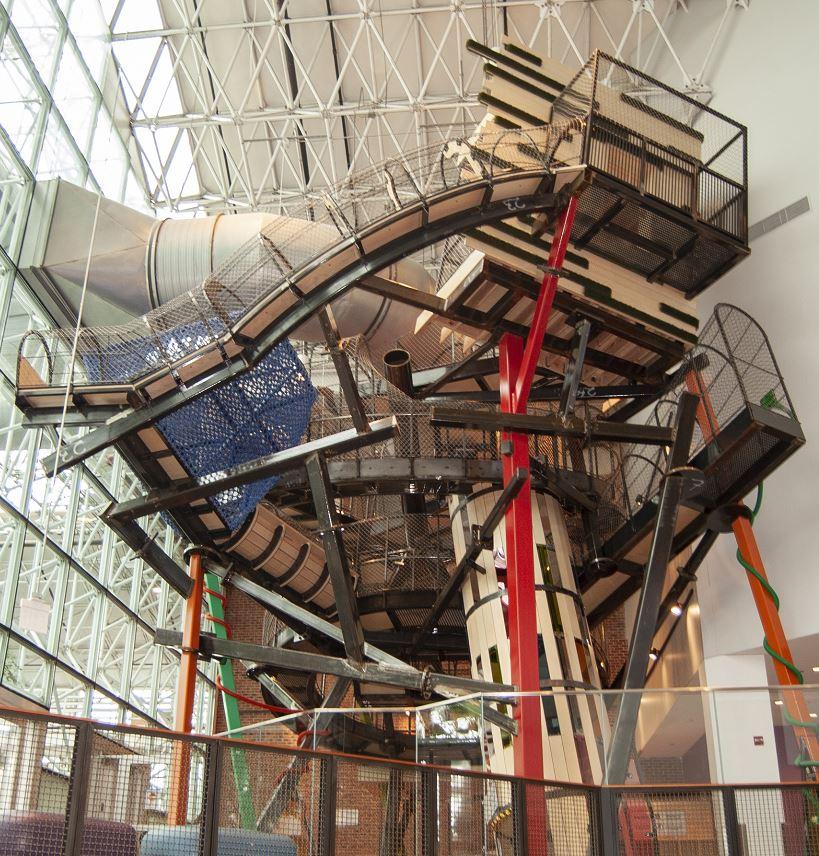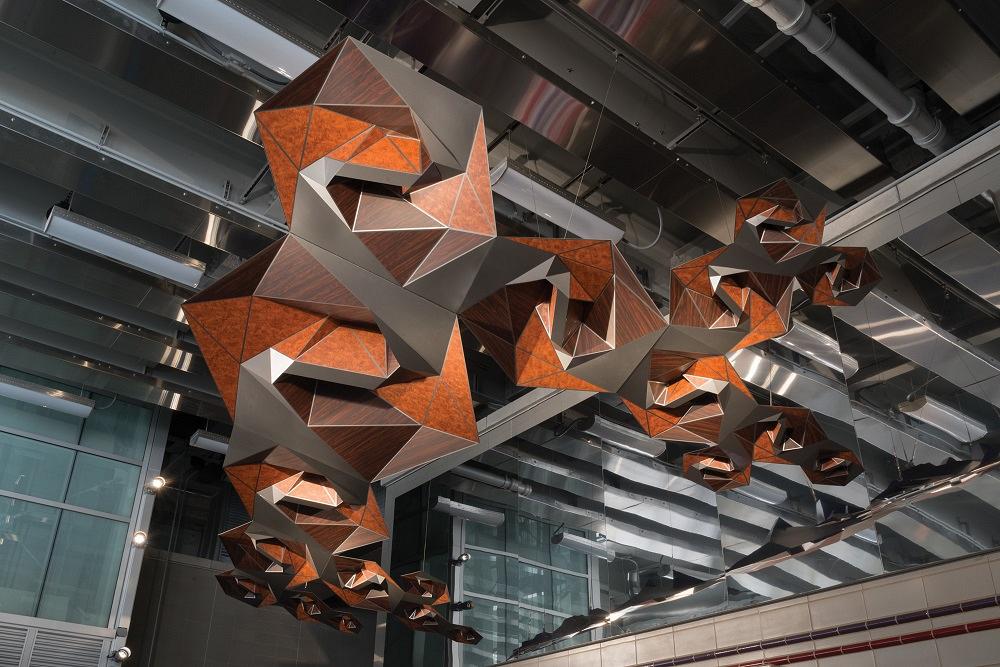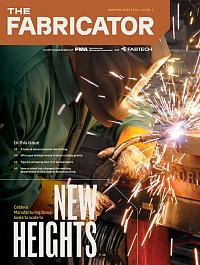Editor
- FMA
- The Fabricator
- FABTECH
- Canadian Metalworking
Categories
- Additive Manufacturing
- Aluminum Welding
- Arc Welding
- Assembly and Joining
- Automation and Robotics
- Bending and Forming
- Consumables
- Cutting and Weld Prep
- Electric Vehicles
- En Español
- Finishing
- Hydroforming
- Laser Cutting
- Laser Welding
- Machining
- Manufacturing Software
- Materials Handling
- Metals/Materials
- Oxyfuel Cutting
- Plasma Cutting
- Power Tools
- Punching and Other Holemaking
- Roll Forming
- Safety
- Sawing
- Shearing
- Shop Management
- Testing and Measuring
- Tube and Pipe Fabrication
- Tube and Pipe Production
- Waterjet Cutting
Industry Directory
Webcasts
Podcasts
FAB 40
Advertise
Subscribe
Account Login
Search
Chicago shop brings artists’ and architects’ ideas to life
Vector Custom Fabricating celebrates 45 years of sculpture and architectural projects
- By Rafael Guerrero
- January 19, 2024
- Article
- Shop Management

For more than four decades, Chicago-based Vector Custom Fabricating has helped artists, architects, and others bring visions and ideas to life. Pictured is Wolfgang Buttress’ “Lucent,” a glass and metal sculpture with 3,115 hand-blown glass orbs that radiate and emit light from a smaller interior via fiber optic cables. A stainless steel filigree connects all these points together. Images: Vector
Forty-five years fly by so fast, said Steve Mueller.
In 2023, Vector Custom Fabricating celebrated its 45th anniversary. The Chicago-based fabricator was founded by Mueller and fellow sculptors Barry Hehemann and Mike Wilkie. The three wanted to continue making art pieces and to have jobs associated with their college degrees.
“There aren’t that many jobs in that field,” Mueller said. “There’s teaching; you could teach at a university level. But that general course for gainful employment was narrowing at that time.
“You could attempt to be financially successful artists by selling your own work. That's an option as well ... but we didn’t want to depend on that,” he said.
In four decades, Vector has made a name for itself in sculpture and architectural/structural metal work in the Chicago area and beyond, with its objective always being to make its work stand out.
Fabrication Marvels
The founding trio had Illinois roots—all three graduated from the University of Illinois at Urbana-Champaign—but they never planned to settle in Chicago.
“That was simply three students graduating from Champaign-Urbana wanting to start a business and asking ourselves, ‘Where's the biggest city nearby?’ I don't remember us ever talking about another city. There wasn't much interest in going out to the East Coast or the West Coast,” Mueller said.
“It's always been a fairly vibrant market for construction,” Mueller said of Chicago. “God knows architecture is given some recognition and emphasis in the Chicagoland area. And there's all these businesses and industries that support the kind of things that we do—it's a robust city.”
Its location grants the fabricator opportunities within the city and outside it. Several of the pieces Vector has worked on can be found in Chicago; some of these works were partnerships between Vector and others. Wolfgang Buttress’ “Lucent,” located in the lobby of the former John Hancock Building, is a glass and metal sculpture featuring 3,115 hand-blown glass orbs that radiate and emit light from a smaller interior via fiber optic cables. A stainless steel filigree connects all these points together. The Vector team called the sculpture a “marvel of fabrication.”
Luftwerk’s “Arboreta” is a glass and aluminum piece that dangles over the breezeway of a new 50-story building in downtown Chicago. The two suspended assemblies include more than 1,000 individual programmable LED lighting nodes. David Weeks Studio’s “The Bots” are two large red sculptures outside the Marriott Marquis Chicago hotel made entirely out of painted aluminum plate. Richard Hunt’s “The Light of Truth” bronze and granite monument, meanwhile, honors journalist/educator/activist Ida B. Wells in the city’s Bronzeville neighborhood. Vector sculptures can be found outside of Chicago as well, including Newport News, Va.; Toledo, Ohio; East Lansing, Mich.; and even at the founding trio’s alma mater, the University of Illinois.
Vector’s fabrication expertise goes beyond sculpture work. It also has completed staircase and railing projects found in Chicago ballparks, hotels, businesses, and private residences.
“A good architect, you could argue, is an artist in a more different world,” co-owner Erik Lowe said of working with architects. “And like the artists, oftentimes they have an idea of what their vision is, but not always an idea of how to get there.”
One of Vector’s architectural projects can be found at the Chicago Children’s Museum. “Cloud Buster” is a 37-ft.-tall, climbable structure made from structural steel, wood, wire, rope, acrylic, fiberglass, and artificial turf.
“A very unique fabrication. It is potentially haphazard and kind of fun. But then, of course, it's also to be climbed all over by children,” said Lowe. “It was intensively engineered and very meticulously fabricated ... a pretty fun and interesting thing for the casual onlooker.”
Vector’s 6,000-sq.-ft. shop (about 9,000 sq. ft. including outdoors) includes plenty of the equipment necessary to complete a variety of projects. The company sometimes subcontracts work to others; for example, the shop does minimal polishing.
“We stick to the things that we do best, which are designing and fabricating and the assembly of these things,” Lowe said.
New Ownership
Mueller and the original trio no longer own Vector. Lowe, Seth Godard, and Nathan Overley took over as full-time owners recently; the three were partial owners for about a decade. While Lowe, Godard, and Overley also studied the same thing, the new owners met while working at Vector.
Lowe, for instance, has been with Vector for more than two decades. “It’s hard to really know what other jobs are like anymore,” he said.
The new generation of owners care deeply about the small but creative business, as do the other employees, Lowe said.
“I think that most of the employees that have ever come through here all sort of have that same love and desire,” he added. “It's nice to be working, doing the things that you like to do with other people who also like the same things.”
About the Author

Rafael Guerrero
2135 Point Blvd.
Elgin, IL 60123
(815)-227-8242
Rafael Guerrero. was named editor of The Welder in April 2022. He spent nine years as a journalist in newspapers in the Midwest and Pacific Northwest, covering topics and communities in central Illinois, Washington, and the Chicago area.
subscribe now

The Fabricator is North America's leading magazine for the metal forming and fabricating industry. The magazine delivers the news, technical articles, and case histories that enable fabricators to do their jobs more efficiently. The Fabricator has served the industry since 1970.
start your free subscription- Stay connected from anywhere

Easily access valuable industry resources now with full access to the digital edition of The Fabricator.

Easily access valuable industry resources now with full access to the digital edition of The Welder.

Easily access valuable industry resources now with full access to the digital edition of The Tube and Pipe Journal.
- Podcasting
- Podcast:
- The Fabricator Podcast
- Published:
- 04/30/2024
- Running Time:
- 53:00
Seth Feldman of Iowa-based Wertzbaugher Services joins The Fabricator Podcast to offer his take as a Gen Zer...
- Industry Events
16th Annual Safety Conference
- April 30 - May 1, 2024
- Elgin,
Pipe and Tube Conference
- May 21 - 22, 2024
- Omaha, NE
World-Class Roll Forming Workshop
- June 5 - 6, 2024
- Louisville, KY
Advanced Laser Application Workshop
- June 25 - 27, 2024
- Novi, MI

































